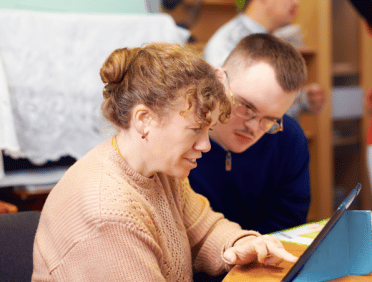Safeguarding in Sports
Sports have the ability to inspire, motivate, and unify people from all walks of life. However, in the exciting world of sports, there is a responsibility to prioritise the safety and well-being of all participants, particularly those who may be more vulnerable.
Sports play an important role in many people’s lives, encouraging teamwork, discipline, and physical well-being. However, the safety and well-being of those engaging in sports, particularly vulnerable populations such as children and athletes, necessitate close monitoring.
Safeguarding in sports is a vital feature in the United Kingdom that promotes a safe and supportive environment for all athletes. We will examine the fundamental components of safeguarding, the UK statutory framework, and the extensive procedures that sports organisations must implement to prioritise the safety of their athletes and staff.
What is Safeguarding in sports?
Safeguarding in sports refers to the collection of procedures, policies, and practises put in place to ensure the safety, well-being, and protection of all those involved in sports, with a focus on vulnerable groups such as children and athletes. The basic purpose of safeguarding is to create a safe environment in which individuals can engage in sports without fear of danger, abuse, prejudice, or exploitation.
Safeguarding covers a wide range of topics, including the prevention and reaction to physical, emotional, and sexual abuse, as well as concerns of discrimination, harassment, and bullying within the sporting community. It consists of a set of regulatory frameworks, organisational regulations, educational programmes, and cultural activities aimed at fostering a pleasant and courteous athletic environment.
Aspects of Safeguarding in Sports
Safeguarding in sports consists of several fundamental components, each of which plays an important role in ensuring a safe and supportive atmosphere for all athletes. These features are intended to prevent and remedy abuse, prejudice, and exploitation.
Legislative Framework
Legal regulations and protocols lay the groundwork for sports safety. These laws establish guidelines, background checks, and procedures to safeguard individuals, particularly children and vulnerable populations.
Organisational Policies
Specific policies and codes of conduct are developed and enforced by sports organisations to guide the behaviour of athletes, coaches, staff, and volunteers. These regulations define expected norms of behaviour, incident reporting methods, and punishments for noncompliance.
Education and Training
Training programmes teach athletes how to recognise indications of abuse, comprehend acceptable behaviour, and report incidences. This instruction is critical to empowering participants to contribute to a safe athletic environment.
Transparent Reporting and Investigation Protocols
Clear and transparent reporting and investigation standards guarantee that claims of abuse or misconduct are taken seriously, thoroughly investigated, and appropriate measures based on the findings are taken.
Inclusivity and Non-discrimination
Sports safety programmes encourage inclusivity and nondiscrimination. This entails providing a welcoming and supportive workplace for people of diverse backgrounds, skills, genders, and ages.
Mental Health Support
Recognising the mental health problems that athletes and staff confront, safeguarding initiatives may include provisions for mental health support services and psychological well-being programmes.
Ethical Conduct and Responsible Sportsmanship
Emphasising ethical behaviour and responsible sportsmanship helps to foster a positive athletic culture. This entails encouraging people to play fairly, with integrity, and with mutual respect.
Technological Solutions
Technology now plays a part in safeguarding initiatives, including digital monitoring and reporting systems that help improve the detection and reporting of safeguarding occurrences.
Striving Towards a Safer Sporting Future
Understanding sports safety is a collaborative effort involving legislative agencies, sports organisations, participants, and the general public. The sports industry can create a future in which every individual, regardless of age, ability, or background, may participate in sports with confidence, knowing that their well-being is vital, by prioritising safety, fostering inclusive cultures, and responsibly embracing technological innovations.
The idea of a safer and more inclusive athletic landscape may become a reality with continued collaboration and commitment.
Legislative Framework for Safeguarding in Sports in the UK
The legal framework for sports safeguarding in the United Kingdom is broad, and it is intended to protect the well-being of individuals, particularly children and vulnerable groups, who participate in sports activities.
Sport safety is more than simply a set of recommendations; it is a robust regulatory framework designed to prioritise the protection and well-being of all individuals, with a special emphasis on children and vulnerable groups actively participating in sports activities. This framework is critical for setting norms, encouraging diversity, and preventing exploitation or abuse in the sporting arena.
Legislation and Regulations Relevant to Safeguarding in Sports
The legislative framework for sports safeguarding in the United Kingdom is a complex and changing system meant to secure the safety and well-being of those participating in sports activities. From the fundamental principles of The Children Act 1989 to the adaptability of continuous evaluations, this framework serves as a powerful tool in promoting a culture of safety, inclusivity, and respect within the lively world of sports in the United Kingdom.
The United Kingdom is at the vanguard of safeguarding, leading the path for a secure and flourishing future for all sports participants through a harmonious interplay of regulation, oversight, and community participation.
The Children Act 1989: A Foundation for Safeguarding
The Children Act 1989 is unquestionably the cornerstone of the United Kingdom’s safeguarding legislative system in sports. This legislation, which covers all elements of a child’s life, establishes the fundamental principles for the protection and wellbeing of children, extending its effect into the field of sports. Emphasising the importance of safe and nurturing environments for young athletes, this act sets the tone for safeguarding standards in athletic environments.
Protection of Freedoms Act 2012: Enhancing Safety Through Checks
The Protection of Freedoms Act 2012, which expands on the Children Act 1989, establishes protections to prevent improper individuals from dealing with children. This legislation necessitates enhanced criminal record checks for individuals in roles requiring regular interaction with minors in the context of sports.
This guarantees that people entrusted with coaching, mentoring, or any other position of influence over children are thoroughly vetted, strengthening the protective shield around young athletes.
Safeguarding Vulnerable Groups Act 2006: Extending Protection Across Age Groups
Recognising that vulnerability does not stop with childhood, the Safeguarding Vulnerable Groups Act 2006 expands the scope of protection to include vulnerable people of all ages. This legislation governs sporting activities involving not just children but also adults who may be vulnerable due to physical or mental health issues.
This comprehensive strategy ensures a broad safety net, serving the different demands of the sporting community’s players.
Equality Act 2010: Fostering Inclusivity and Non-discrimination
The Equality Act of 2010 serves as a beacon for inclusivity and non-discrimination in sports in the quest to ensure a fair playing field. This regulation, which has far-reaching implications beyond sports, ensures that everyone, regardless of age, gender, race, or ability, has equal opportunity in sports. The Equality Act enhances the foundation of safeguarding principles in sports by creating a culture of fairness and equal access.
Role of National Governing Bodies: Implementing and Adapting
National governing bodies (NGBs) of sports serve as the caretakers of these legislative concepts within the athletic world. It is incumbent upon them to incorporate the legislative framework’s mandates into their policies and practises.
NGBs transform legal standards into practical instructions by adopting sport-specific safeguarding policies and codes of conduct, ensuring that safeguarding principles are interwoven in the very fabric of each sports discipline.
Government Oversight: Ensuring Compliance and Effectiveness
The Department for Digital, Culture, Media, and Sport, in particular, plays a critical role in regulating the installation and enforcement of safeguarding measures inside sports organisations. Through regulatory monitoring, these agencies guarantee that the legislative framework is more than just a set of recommendations; it actively shapes the culture and behaviour of the sports community.
Continuous Adaptation: Responding to Changing Dynamics
The framework is reviewed and updated on a regular basis to ensure that it stays nimble, responsive, and relevant. This focus on continual development shows the collaborative commitment to safety, exhibiting a proactive approach to addressing developing needs within the dynamic sports context.
The Specific Vulnerabilities Faced by Athletes and Participants in Sports
Participating in sports is a trip through a complex environment of challenges and vulnerabilities, as well as a physical endeavour. While pursuing success, athletes, coaches, and support personnel face specific hazards in the sporting environment. Understanding these individual vulnerabilities is critical for implementing thorough safeguarding measures and cultivating a culture that prioritises the overall well-being of all parties concerned.
Common Risks and Challenges for Athletes
Injury Risks:
Athletes are always in danger of injuries ranging from small strains to major trauma, which can have a negative influence on their physical well-being.
Mental Health Challenges:
The burden of maintaining top physical performance can increase mental health concerns like stress, anxiety, and other related issues.
Common Risks and Challenges for Coaches and Support Staff
Burnout:
Burnout can occur as a result of the demanding nature of coaching and supporting athletes, compromising their mental and emotional resilience.
Mental Health Impact:
Coaches and support staff are responsible for athletes’ well-being, which may have an impact on their own mental health.
Performance-Related Stress: Athletes
Expectation Pressure:
Athletes endure increased demands from themselves, their coaches, their fans, and their sponsors, which contributes to performance-related stress.
Fear of Failure:
The fear of falling short of expectations can lead to performance anxiety and have a severe influence on mental health.
Performance-Related Stress: Coaches
Results-Driven Pressure:
Coaches frequently work in a results-driven atmosphere where they are under pressure to provide consistent success, which can contribute to stress.
Balancing Act:
The difficulty is to strike a balance between the pursuit of performance and the well-being of athletes and the coaching staff.
Social Isolation: Athletes
Limited Social Time:
Strenuous training schedules, frequent travel, and competition obligations might result in restricted social interactions, which can lead to isolation.
Impact on Mental Well-Being:
Social isolation can exacerbate feelings of loneliness and have an influence on an athlete’s mental health.
Social Isolation: Coaches and Support Staff
Professional Isolation:
Professional obligations may limit possibilities for social relationships, lowering overall well-being.
Strategies for Balance:
Developing techniques to maintain a healthy work-life balance becomes critical in order to reduce social isolation.
Comprehensive Safeguarding Measures in Sports Organisations
Sports safety goes beyond simply complying; it entails the proactive application of complete procedures to establish an atmosphere that prioritises the safety, well-being, and ethical treatment of all participants. Sports organisations are critical to developing a culture of respect and safety.
Robust Safeguarding Policies and Codes of Conduct for Athletes and Staff
The creation of strong safeguarding policies and rules of behaviour is critical. These documents explain expected behaviours, reporting methods, and punishments for infractions. They serve as a guide for athletes, coaches, and support personnel, establishing clear expectations for a safe and respectful athletic environment.
Training and Education on Recognising and Reporting Safeguarding Incidents
It is critical to equip members of the sports community with the expertise to recognise and report safe events. Coaches, officials, and volunteers are trained to recognise symptoms of abuse, harassment, or prejudice and are directed to the appropriate reporting channels.
Transparent Reporting and Investigation Protocols for Sporting Organisations
Transparency is essential for preserving trust in the sports community. Sports organisations must develop clear reporting and investigation methods to ensure that claims are taken seriously, investigated swiftly, and appropriate actions are implemented based on the results.
Safe and Supportive Sporting Environment for Participants
Creating a safe and supportive sporting environment is critical for the overall growth and well-being of athletes. Beyond the physical aspects of training and competition, it is critical to establish a culture of respect, inclusivity, and mental health assistance.
Respectful and Inclusive Sporting Cultures to Prevent Abuse and Discrimination
A culture of respect and inclusion is essential for preventing abuse and prejudice. Sports organisations must actively encourage diversity, prevent discriminatory behaviour, and recognise the unique contributions of people from all backgrounds.
Mental Health Support Services and Well-being Programmes for Athletes and Staff
Recognising the mental health problems that athletes and staff may experience, sports organisations are increasingly including mental health support services and well-being programmes into their operations. These efforts not only treat mental health issues but also contribute to individuals’ general resilience and happiness.
Education on Ethical Conduct and Responsible Sportsmanship
A positive sporting culture is based on ethical behaviour and responsible sportsmanship. Education programmes that emphasise fair play, ethics, and respect for opponents help players develop well-rounded personalities and promote a sense of community within the sports community.
Challenges and Best Practises in Safeguarding within the Sports Industry
While the sports sector provides a platform for achievement and camaraderie, it is not without obstacles in terms of ensuring the well-being of players. Understanding and addressing these issues is critical for putting effective safeguards in place.
Challenges Faced by Sporting Organisations in Implementing Safeguarding Measures
Many sporting organisations, particularly those at the grassroots level, may suffer resource limits and obstacles when it comes to offering thorough training. To address these issues, government agencies, sports organisations, and community groups must work together.
Effective Safeguarding Protocols in Sporting Events and Organisations
Safeguarding initiatives extend beyond the practise pitch to encompass athletic events. Effective event protocols, such as spectator behaviour, emergency response plans, and security measures, contribute to the overall safety of both participants and spectators.
Best Practises in Promoting a Culture of Safety and Respect in Sports
Identifying and sharing best practises is critical for protecting continual improvement. Organisations in sports can learn from one another by adopting effective methods and adapting them to their own situations.
The Role of Technology in Enhancing Safeguarding Efforts in Sports
Technology plays a critical role in boosting safeguarding efforts and enabling innovative solutions to maintain the safety, well-being, and integrity of all players in the continuously expanding sports world. Technology provides a variety of instruments to boost safeguarding measures, ranging from digital monitoring systems to faster communication processes.
However, striking a balance between leveraging the benefits of technology and protecting individuals’ privacy is critical.
Digital Monitoring and Reporting Systems for Safeguarding Incidents
Digital monitoring solutions provide a platform for identifying and reporting safeguarding problems in real time. These systems can detect patterns, allowing for a more proactive approach to detecting and correcting future problems.
Technology for Streamlined Communication and Reporting Processes in Sporting Organisations
Responding to safeguarding situations requires effective communication. Technology helps to streamline communication and reporting processes, ensuring that information is distributed quickly and reaches the appropriate authorities.
Ethical and Responsible Use of Technology in Safeguarding Participants in Sports
While technology has many advantages, its application must be ethical and accountable. Data protection, privacy concerns, and the potential for technology misuse should all be considered in safeguarding efforts, mandating a balance between innovation and participant protection.
Key Takeaways for Safeguarding in Sports
Safeguarding in UK sports is a multifaceted endeavour that necessitates a comprehensive approach that includes legislation, organisational practises, and the ethical use of technology. The sports business can establish an atmosphere where the well-being, dignity, and rights of all participants are protected by constantly changing and adapting to new problems.
Legislative Foundation
A strong legislative framework demonstrates the United Kingdom’s dedication to sports safety. This framework is intended to prioritise the well-being of those participating in sports activities, with a focus on children and vulnerable groups in particular.
Key Legislation and Regulations
- The Children Act of 1989 is a cornerstone, establishing severe rules for the protection of children in sporting situations. It explains sporting organisations’ duties in providing a safe environment for young participation.
- The Protection of Freedoms Act of 2012 requires rigorous background checks for anyone who works with children in sports, reinforcing preventive measures against potential threats.
- The Safeguarding Vulnerable Groups Act of 2006 establishes a legal framework for sporting activities involving vulnerable individuals, emphasising the importance of increased supervision and protective measures.
- The Equality Act of 2010, a key piece of legislation, promotes inclusivity and nondiscrimination in sports, emphasising the necessity of equal opportunity for all athletes.
Role of Sports-Governing Bodies
Sports governing bodies play an important role in the establishment and enforcement of safety measures. Their responsibilities include developing policies, implementing training programmes, and maintaining compliance among related organisations.
Vulnerabilities Faced by Athletes
Aside from the physical demands of sports, athletes, coaches, and support staff face a number of vulnerabilities. These include mental health issues caused by performance-related stress, social isolation, and financial demands. Recognising and addressing these issues is critical for overall security.
Power Dynamics and Competition
Vulnerabilities might be exacerbated by the dynamics of sporting organisations. Power inequalities in sports, exacerbated by their competitive character, can lead to ethical quandaries and, in severe circumstances, abuse, harassment, or discrimination. Recognising and minimising these hazards are critical components of risk mitigation initiatives.
Comprehensive Safeguarding Measures
It is critical to establish strong safeguarding policies and codes of behaviour. These documents should be evaluated on a regular basis and effectively disseminated to all participants in sports organisations.
Training and education programmes are critical in providing athletes, coaches, and support staff with the knowledge and skills needed to recognise and report safeguarding occurrences as soon as possible.
A successful safeguarding strategy must include transparent reporting and investigation methods. Whistleblower safeguards ensure that people can report incidents without fear of retaliation.
Safe and Supportive Sporting Environment
Fostering a safe and supportive sporting environment necessitates the development of respectful and inclusive cultures. This includes fostering diversity and enacting inclusive policies to accommodate people of all origins, skills, and identities.
Mental health support services and well-being programmes are essential in addressing athletes’ and staff’s overall well-being. These programmes include counselling services, stress management classes, and peer support networks.
Education on ethical behaviour and appropriate sportsmanship helps participants develop values such as honesty, integrity, and respect. Leadership training emphasises the importance of leaders setting a good example.
Challenges and Best Practises
Strategic investment and collaboration can help sporting organisations overcome resource and training difficulties.
Allocating budgetary resources expressly for safeguarding activities, as well as cooperating with outside experts, can help to improve training programmes.
It is critical to tailor security protocols for unique events and organisations. Regular audits and evaluations guarantee that these protocols remain effective and highlight opportunities for improvement.
Promoting a culture of continuous improvement in the sports sector entails evaluating and modifying rules and practises on a regular basis. Organisations are incentivized to excel at creating safe and respectful athletic environments through recognition programmes.
The Role of Technology
Digital monitoring and reporting systems provide considerable advantages by allowing for real-time monitoring during sporting events and training sessions. These solutions aid in the early detection and intervention of security threats.
Technology-enabled, streamlined communication mechanisms promote rapid response and cooperation in dealing with safeguarding events. Data security measures, such as secure and encrypted platforms, are critical for preserving confidentiality.
Transparent policies, informed consent from participants, and ongoing education are required for ethical and responsible technology use. It is critical to strike a balance between the benefits of technology and privacy concerns in order to establish trust among participants.
Balancing Innovation and Privacy
With developing technologies, the future of safeguarding in UK sports presents intriguing potential. By analysing behavioural patterns, artificial intelligence (AI) and predictive analytics can help with early intervention.
Immersive training programmes can benefit from virtual reality (VR), which allows participants to mimic and respond to safety scenarios. Accessibility for people with different needs is a critical factor.
Blockchain technology provides secure data storage, strengthening the integrity of protecting sensitive information. Data protection requirements and ethical standards must be followed when deploying blockchain technologies.
A collaborative strategy within the sports industry is required to ensure consistent and accountable use of technology in safeguarding, including information exchange and the development of industry-wide standards.
Safeguarding Training
- Learn Q’s Safeguarding Children Level 1 is an introductory course that provides a basic understanding of safeguarding vulnerable children. It covers the concept of safeguarding, the importance of safeguarding, the legislation in place to protect vulnerable children, the signs of abuse and how to avoid them, and how to respond when a vulnerable child discloses they are being abused or neglected. This course is suitable for anyone who works with vulnerable children, including managers, supervisors, employees, and volunteers at all levels.
- Learn Q’s Safeguarding Children Level 2 course, on the other hand, is a more advanced course that builds on the knowledge gained in Level 1. It provides a more in-depth understanding of safeguarding, including recognising abuse, the responsibilities of different safeguarding roles, effective communication, and how to handle concerns and incidents related to safeguarding. This course is designed for those with additional safeguarding responsibilities, such as those who work in hospitals, general practices, nursing homes, care homes, or domiciliary care, as well as in religious organisations and community organisations.
- The Safeguarding Adults Level 1 course (£25) offered by Learn Q in the UK covers several key areas crucial for the protection of vulnerable adults. Participants will learn about the concept of safeguarding vulnerable adults, the importance of safeguarding, relevant legislation, recognising signs of abuse, responding to disclosures of abuse or neglect, and reporting safeguarding concerns while maintaining confidentiality.
- The Safeguarding Adults Level 2 course (£28) at Learn Q is designed for individuals with additional safeguarding responsibilities, particularly those working in settings like hospitals, general practices, nursing homes, care homes, domiciliary care, religious organisations, and community organisations. It is ideal for seasoned team members who have already completed introductory Level 1 training. The course content includes understanding the concept of safeguarding vulnerable adults, the importance of safeguarding, relevant legislation, signs of abuse, responding to abuse or neglect disclosures, reporting safeguarding concerns, maintaining confidentiality, understanding workplace safeguarding roles and responsibilities, multi-agency working, and effective communication skills
- Learn Q’s Preventing Radicalisation course is designed to help frontline sectors to be aware of how to prevent radicalism and extremism. Especially for individuals who have contact with adults who may be vulnerable. It raises awareness of the signs and techniques of radicalisation so that you can provide support and guidance to individuals in need as well as save their lives if you can identify these signs.
You can get further savings by purchasing one of Learn Qs money saving bundles, such as:
These courses are ideal for those who work in hospitals, general practices, nursing homes, care homes, domiciliary care, as well as in religious and community organisations. By completing this course, you will be better equipped to handle safeguarding concerns and to ensure the safety and well-being of vulnerable adults.
At Learn Q, we are committed to providing high-quality training that meets the needs of professionals across a range of industries. Our Safeguarding Children courses are designed to provide you with the knowledge and skills you need to excel in your role and make a real difference in the lives of vulnerable children. Sign up today and take the next step in your career!












